
by Kathryn Brenne

Narrow french seams, mock french seams, double-stitched seams, self-bound and bias-bound seams are all suitable seams for fine, sheer fabrics. All machine stitching can be done with a 2mm stitch length.
When choosing a seaming technique consider how strong the seam needs to be and how stiff the finished seam will be. Machine-stitching involves two lengths of thread, one on top and one in the bobbin. Therefore, a double stitched seam involves four lengths of thread. The more times that a seam is machine stitched, the stronger it will be, but at the same time the stiffer it will become. A combination of machine stitching and hand finishing can give a softer finish.

sew 3/8" seam allowance wrong sides together
To make a narrow french seam place fabric wrong sides together and sew a generous 3/8" seam allowance .

press seam open
Press the seam flat to set the stitching and then press open.
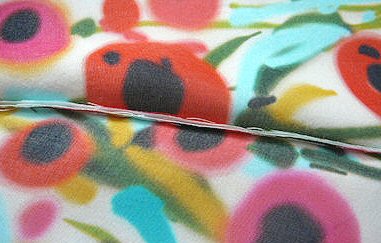
trim seam close to stitching
Trim both sides of the seam allowance down to a 1/8".
Fold fabric right sides together and press seam. Hand-baste edge to hold. Sew the seam a second time using a scant 1/4" seam allowance. Press seam flat and then to one side.

hand baste right sides together

stitch a scant 1/4"
A french seam is strong but it can be a bit stiff and bulky. Occasionally the first sewn edge can unravel as it is trimmed so short. French seams are easiest to do on straight seams. They can be done on curved edges but it's more difficult to get a clean, professional-looking result.

mock french seam
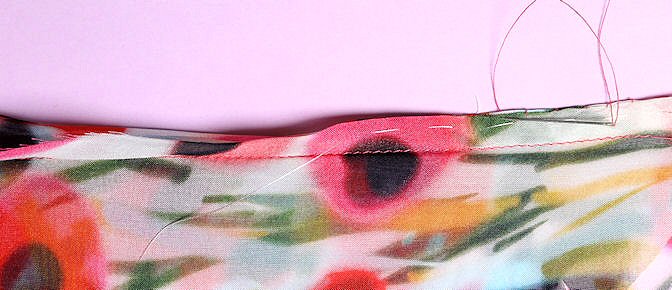
slipstitch edges of mock french seam
A mock french seam has the appearance of a french seam but is a bit softer as it is hand-finished. There is less chance of it ravelling as the edges are not cut short. To make a mock french seam, place fabric right sides together and sew a 5/8" seam allowance. Press the seam flat and then open. Fold the raw edges of the seam allowance in towards the seam and press. Baste the folded edges together. Slip-stitch folded edges together. Press the seam flat and then towards on side. Because this seam is finished by hand there are only three lengths of thread in the seam, creating a softer finish. This technique also works best on straight seams.
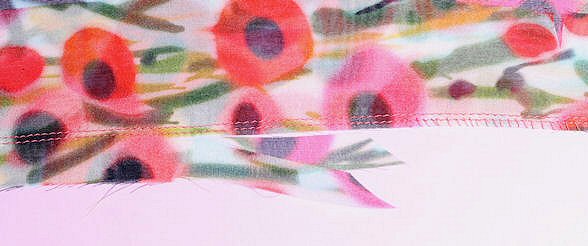
double stitched seam with hand overcast finish
A double stitched seam can be narrow and strong. Place fabric right sides together and sew a 5/8" seam allowance. Sew seam a second time positioning stitching 1/16" away from first row of stitching in the seam allowance. Two rows of stitching side by side are stronger than two rows on top of each other. Trim the seam allowance close to the second row of stitching. Hand overcast the raw edge.
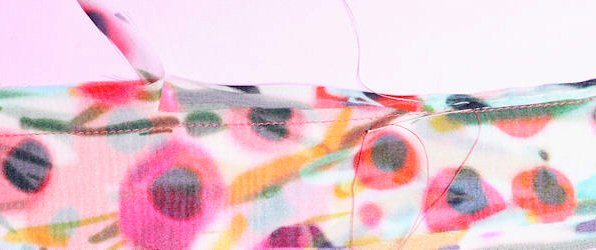
self bound seam
A self bound seam uses the seam allowance to finish the seam. Place fabric right sides together and sew a 5/8" seam allowance. Press seam flat. Trim one seam allowance down to a narrow 1/4". Press the longer seam allowance in half. Wrap the folded edge over the cut edge, placing the fold along the stitching. Baste to hold. Slip-stitch folded edge to seam allowance. Press seam flat and then to one side. A self bound seam is easiest to do on straight seams. This technique creates a softer seam with fewer layers of fabric than a mock french seam.
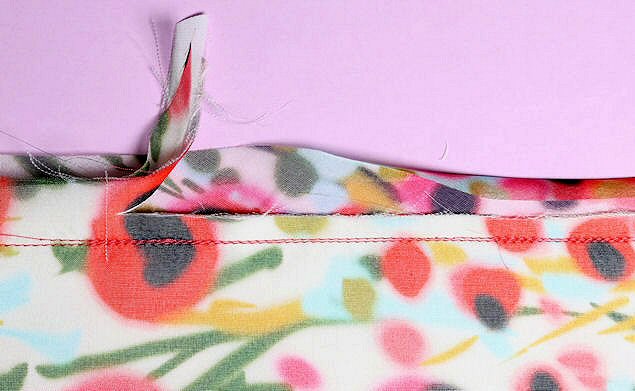
bias bound seam
A bias bound seam is a good seam for armholes. For lighter-colored sheer fabrics a flesh-toned bias fabric works very well. Seam allowances will disappear when the garment is worn. Place fabric right sides together and sew a 5/8" seam allowance. Trim seam allowance down to 1/4". Cut strips of bias 1 1/4" wide. Sew binding to seam, aligning raw edge to cut edges of seam allowance. Use 1/4" seam allowance. Fold the outer raw edge of binding in towards seam allowance. Fold binding over. The folded edge should be sitting on stitch line. Baste to hold. Slip-stitch folded edge to seam allowance.

